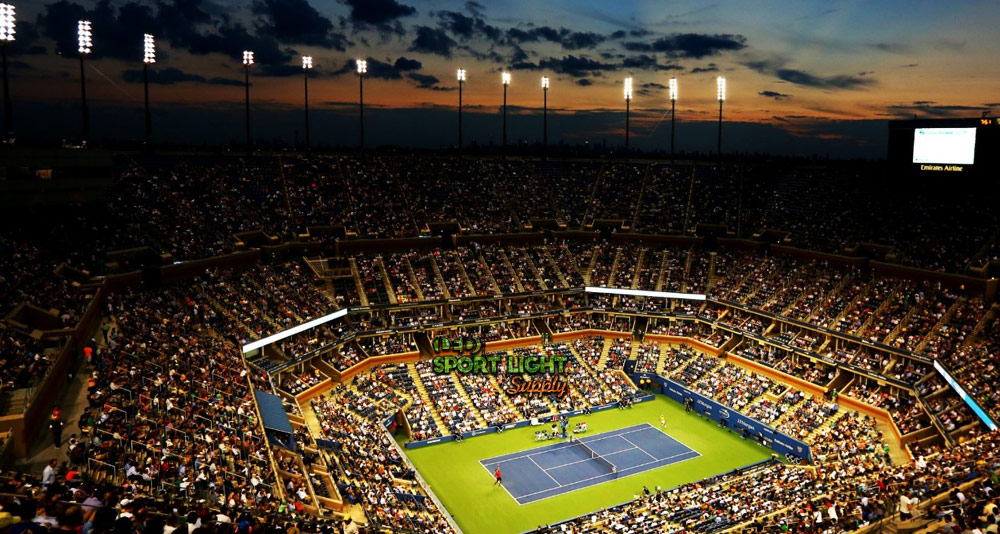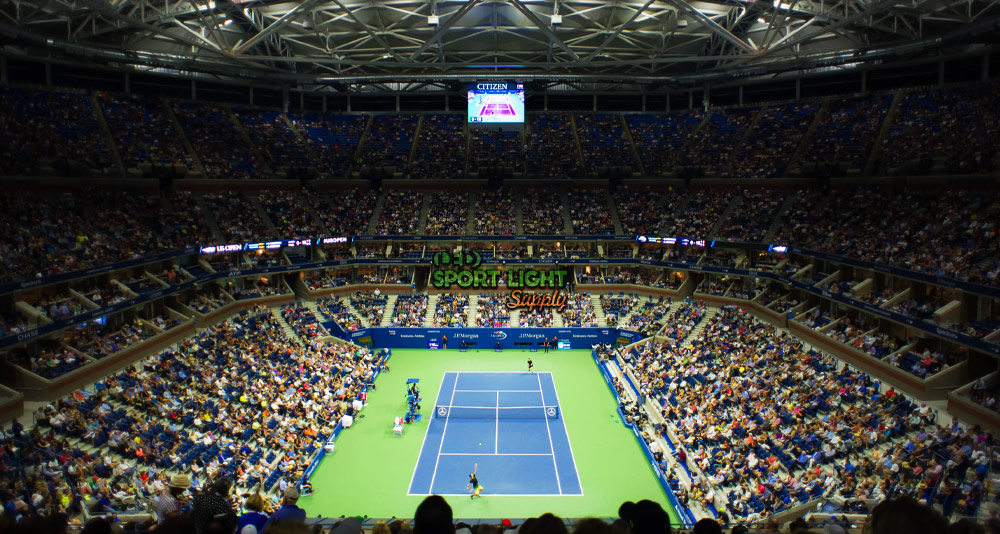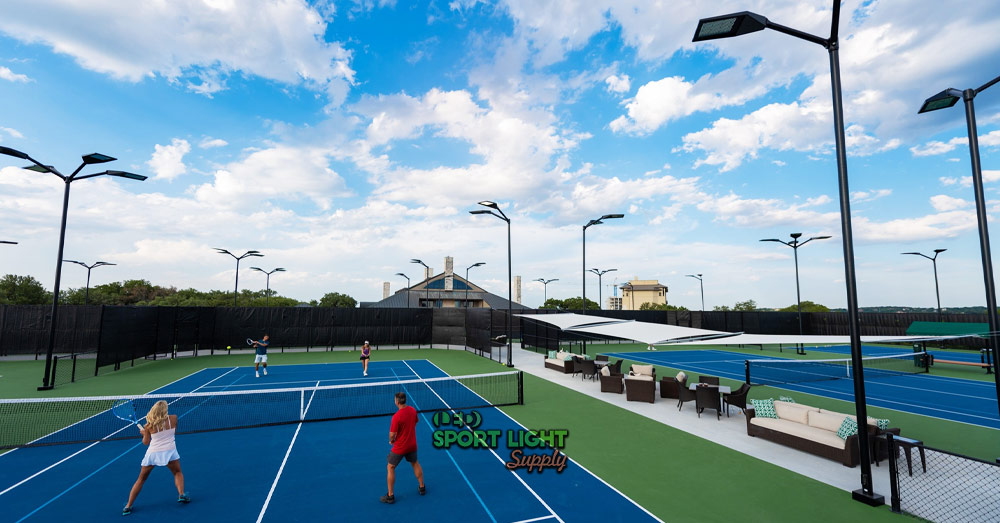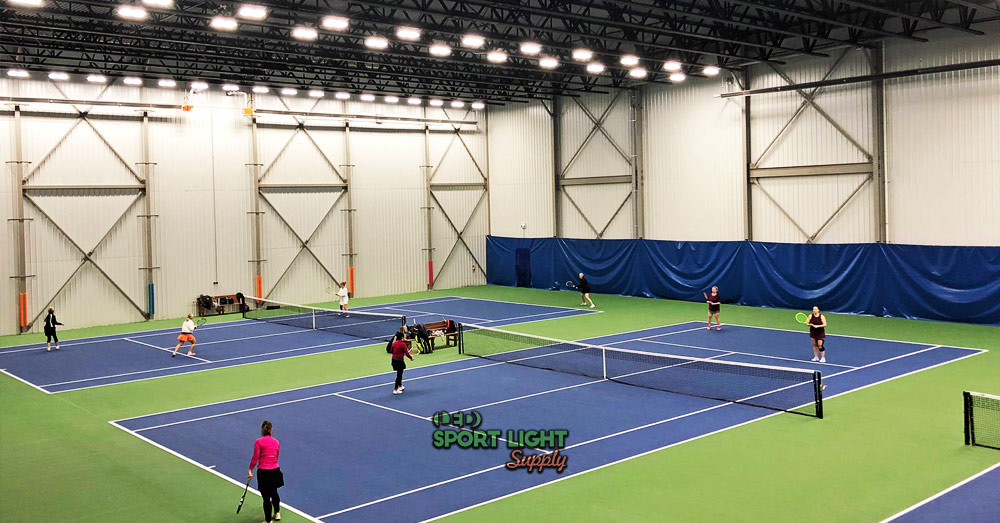If you’re curious about the number of lumens needed to properly light a tennis court, this article is for you. We will provide essential information on lumens and guide you on choosing the appropriate number of lighting fixtures for optimal illumination of a tennis court.
Table of Contents
ToggleWhat is a Lumen?
A lumen is a unit of luminous flux, abbreviated as lm, and it quantifies the total amount of visible light emitted by a light source. Essentially, it measures the brightness of a light fixture. The lumen value indicates how much light the fixture produces and how effectively it illuminates an area.
The general principle is that the higher the lumen rating, the more light the fixture emits. For instance, a floodlight with a higher lumen output will provide brighter illumination compared to one with a lower lumen rating. This measurement is crucial in determining the right lighting for various applications, from residential spaces to large outdoor areas such as sports courts. By understanding lumens, you can better assess and select lighting solutions that meet your specific needs and ensure adequate brightness and visibility.
Factors Affecting the Lumens Needed for Tennis Court Lighting
Tennis courts, despite their standardized size, require varying amounts of lumens based on several factors including the level of competition, pole height, number of light poles, and more. Let’s explore these factors in detail.
Level of Competition

The illumination requirements for tennis courts differ depending on the level of play. According to the ITF tennis court lighting standards, the recommended lux levels are:
| Lighting Class | Lux Level | Suitable For |
|---|---|---|
| Class I | 500 lux | National or international matches |
| Class II | 300 lux | Tennis clubs or college competitions |
| Class III | 200 lux | Residential or recreational use |
For a professional-grade tennis court (Class I), approximately 300,000 to 400,000 lumens are necessary to achieve the required 500 lux. The calculation is based on the court’s size (approximately 600 square meters). The minimum lumens required can be calculated as follows:
| Court Type | Lux Level | Minimum Lumens Required |
|---|---|---|
| Class I | 500 lux | 600 m² × 500 lux = 300,000 lumens |
| Class II | 300 lux | 600 m² × 300 lux = 180,000 lumens |
| Class III | 200 lux | 600 m² × 200 lux = 120,000 lumens |
These values represent theoretical calculations. In practice, light loss and spill light require a 10% to 20% increase in lumens to ensure adequate lighting.
Number of Lighting Fixtures

The number of fixtures needed for a tennis court depends largely on the layout of the light poles. Typical layouts include:
| Layout Type | Number of Poles | Lamps per Pole | Total Lights | Lumens per Light | Power per Light | Total Power Required |
|---|---|---|---|---|---|---|
| 4-Pole Layout | 4 | 2 | 8 | 37,500 lumens | 250W | 2,000W |
| 6-Pole Layout | 6 | 2 | 12 | 25,000 lumens | 150W | 1,800W |
For specific lighting requirements, feel free to reach out to us for a free consultation on tennis court and other sports lighting.

Pole Height
The height of the poles used in outdoor tennis court lighting also impacts the amount of lumens required. Taller poles may necessitate an increase in lumens, for example, from 300,000 to 330,000 lumens, to counteract light loss due to attenuation and scattering. Dust or other environmental factors can further affect light distribution.
For precise lighting planning, using lighting simulation software such as DIALux can help in accurately predicting the lighting outcomes. Sport Light Supply offers free DIALux service to assist with your lighting design needs.
Number of Poles for Outdoor Tennis Court Lighting
When planning the lighting for an outdoor tennis court, the number of poles significantly influences the overall lighting design. Each pole in the lighting system needs to cover a specific area of the court. With fewer poles, each one has to cover a larger area, which can lead to increased light beam travel distance and greater beam attenuation.
For example, in a 4-pole lighting layout, each pole must handle a larger section of the court compared to a 6-pole layout. This difference impacts the uniformity and effectiveness of the lighting, making it crucial to carefully consider the number of poles when designing the lighting system.
Ceiling Height for Indoor Tennis Courts

Ceiling height is another critical factor in indoor tennis court lighting design. If the ceiling height exceeds 10 to 15 meters, there is a need to increase the total lumens by approximately 15% to 30% to achieve adequate lighting levels.
The height of the ceiling affects how light is distributed across the court. A higher ceiling requires more lumens to compensate for the increased distance that light travels before reaching the playing surface. Accurate lumen estimation is essential to ensure proper lighting levels and to maintain a consistent lighting environment for players.
Conclusion
Several factors influence the required lumens for tennis court lighting, including the number of poles and ceiling height. Advanced lighting software can help estimate the exact lumen requirements. If you need assistance with your lighting design, please feel free to contact us. We are here to help you achieve the best lighting solution for your needs.
